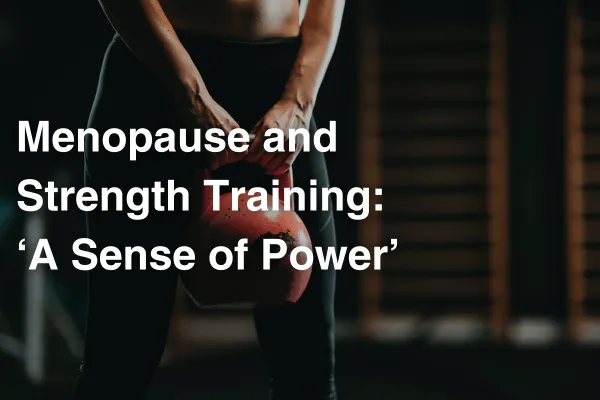
Menopause and Strength Training: ‘A Sense of Power’
For years, Cindy Dallow thought endurance sports were all she needed to stay healthy.
The longtime triathlete and PhD in nutrition could bike for miles, run 10Ks, and finish Ironman events — but she couldn’t do a single push-up.
“I didn’t see the point in resistance training or going to the gym,” Cindy says. “I was fit. Or so I thought.”
That changed in her early 60s when she started struggling with everyday tasks, like lifting a suitcase overhead or getting up from the floor.
“It hit me. Aerobic fitness wasn’t enough anymore,” she says.
Like many women in midlife, Cindy realized that menopause had shifted her body in ways her usual workouts didn’t address. Today, she’s not only a registered nutritionist but also a certified personal trainer and coach who helps women over 50 get stronger — not just for appearance, but for independence and long-term health.
Why Strength Training Matters More After Menopause
Menopause leads to a natural decline in estrogen, which contributes to:
Bone density loss
Muscle mass reduction
Insulin resistance
Slower metabolism
According to the National Institutes of Health, postmenopausal women can lose up to 20% of their bone density in the five to seven years after menopause. And research published by the North American Menopause Society emphasizes that resistance training helps mitigate this loss while improving cardiovascular and metabolic health.
“Many women are shocked to learn that the No. 1 reason older adults end up in nursing homes isn’t illness — it’s weakness,” Cindy says. “They simply can’t live independently anymore.”
That happens when you can’t stand up off the toilet or put away groceries.
Strength training can help prevent that. It:
Preserves muscle mass and builds strength
Improves balance and reduces fall risk
Stimulates bone growth
Supports weight management and brain health
And let’s not forget confidence.
“Strength training gave me a sense of power I didn’t know I was missing,” Cindy says.
One of the biggest myths Cindy hears is that women need to start by lifting extremely heavy weights.
It’s important to start where you are and progress safely. “You just have to challenge your muscles at your level and progress over time,” she says.
That might start with bodyweight squats or using soup cans for dumbbells. The key is progressive resistance — gradually increasing the challenge to keep getting results.
Overcoming the Weight Room Intimidation
Cindy avoided her gym’s weight room for six months. Despite her athletic background, she didn’t know where to start.
“Hiring a coach changed everything,” she says. “I finally had a plan and support.”
That’s a common experience for women, especially if they’ve never strength trained before. A welcoming trainer, a well-designed program, and a bit of encouragement go a long way.
“Do it because you want to stay strong enough to live the life you love,” Cindy says.
We couldn’t agree more. We are here to help you on your path to strength and vitality. Call or come see us today.
